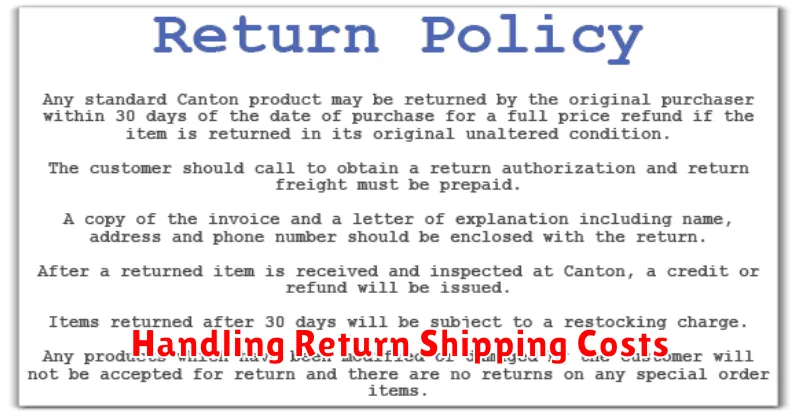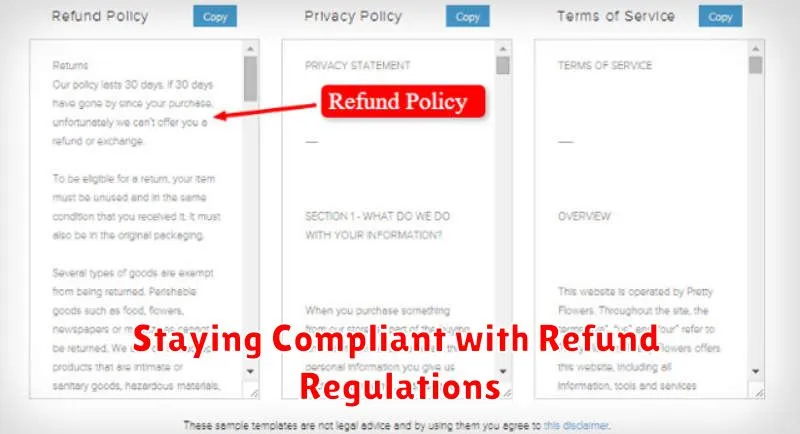In today’s competitive e-commerce landscape, a customer-friendly refund policy is paramount to building trust and fostering long-term relationships with your shoppers. A clearly defined and accommodating return policy not only mitigates potential purchase anxieties but also significantly influences purchasing decisions. Crafting a refund policy that inspires confidence can be the key to converting browsing visitors into loyal customers and driving repeat business for your online store. This comprehensive guide will delve into the essential elements of creating a customer-friendly refund policy that balances both customer satisfaction and the needs of your business.
A well-crafted refund policy serves as more than just a formality; it’s a powerful tool that can set your online store apart from the competition. By offering a straightforward and generous return policy, you demonstrate a commitment to customer satisfaction, ultimately boosting sales and enhancing your brand’s reputation. This article will equip you with the knowledge and strategies needed to develop a refund policy that not only protects your business but also cultivates a positive customer experience, contributing to the overall success of your online store. From addressing common customer concerns to navigating complex return scenarios, we’ll explore the intricacies of formulating a customer-friendly refund policy that instills confidence and promotes customer loyalty.
Understanding the Importance of a Clear Refund Policy
A well-defined refund policy is crucial for building trust and fostering positive customer relationships in the online marketplace. It provides transparency and sets clear expectations, reducing potential misunderstandings and disputes.
Increased Customer Confidence: A clear refund policy demonstrates your commitment to customer satisfaction. Shoppers are more likely to purchase from a store that offers a straightforward and fair return process. This builds confidence and encourages larger purchases.
Reduced Customer Service Inquiries: A comprehensive policy preemptively answers common customer questions regarding returns, minimizing the need for customers to contact support. This frees up your customer service team to handle more complex issues.
Legal Protection: A clear refund policy protects your business by outlining the terms of sale and return. This can help mitigate potential legal issues and disputes. It sets clear boundaries and expectations for both the buyer and seller.
Improved Brand Reputation: A customer-friendly refund policy enhances your brand image and fosters loyalty. Positive return experiences can lead to positive word-of-mouth marketing and repeat business.
Defining the Scope of Your Refund Policy
Clearly defining the scope of your refund policy is crucial. This means specifying exactly which products or services are covered. Digital goods, for example, might have different refund stipulations than physical items. Subscription services may offer prorated refunds or none at all depending on the terms. Sale items or clearance merchandise often have a more restricted return window or are deemed final sale.
Consider using categories to outline what falls within your refund policy’s scope. For example, you could create categories like “Eligible for Full Refund,” “Eligible for Store Credit Only,” and “Non-Refundable.” This helps customers quickly determine where their purchase falls and what their options are.
Explicitly state any exceptions to your standard policy. This prevents confusion and sets clear expectations. By being upfront about what is and isn’t covered, you build trust and transparency with your customers.
Outlining Eligible Reasons for Refunds
Clearly stating acceptable reasons for refunds builds trust and manages customer expectations. A well-defined list helps customers understand when they are entitled to a refund and reduces disputes. Common reasons include:
- Damaged Goods: If the product arrives damaged or broken, customers should be eligible for a refund.
- Defective Products: Items that malfunction or do not work as advertised should qualify for a refund.
- Incorrect Item Received: If a customer receives the wrong product, size, or color, a refund should be offered.
- Material Differences from Description: If the product received differs significantly from the online description, a refund is justifiable.
- Unopened/Unused Items: For certain products, offering refunds on unopened or unused items within a specified timeframe can enhance customer satisfaction. Clearly define any restrictions, such as on sale items.
Important Note: While offering a comprehensive list is beneficial, avoid making it overly broad to prevent potential exploitation. Strike a balance between customer satisfaction and business protection.
Specifying the Refund Process and Timeframe
A clear and concise refund process is crucial for a positive customer experience. Clearly outline the steps a customer needs to take to initiate a refund. This may include contacting customer service, filling out a form, or accessing a self-service portal.
Establish a reasonable timeframe for processing refunds. Be upfront about how long customers can expect to wait before receiving their refund. For example, “Refunds are typically processed within 5-7 business days after we receive the returned item.” This manages expectations and reduces potential inquiries.
Specify the refund method. Will the refund be credited back to the original payment method or issued as store credit? Clearly state this in your policy. For instance, “Refunds will be credited back to the original form of payment.” Or, if offering store credit as an option, explain the terms and conditions associated with it.
Handling Return Shipping Costs

A clear policy on return shipping costs is crucial for a positive customer experience. Transparency is key. Clearly state who bears the cost of return shipping in different scenarios.
Will you provide a prepaid return shipping label? If so, under what conditions? Will the cost of the label be deducted from the refund? Or, will customers be responsible for arranging and paying for return shipping themselves? If the latter, provide clear instructions on acceptable shipping methods and carriers.
Consider offering free return shipping for certain situations, such as damaged goods or incorrect items received. This can greatly enhance customer satisfaction and build trust. Conversely, if the customer simply changed their mind, you might stipulate that they are responsible for return shipping costs.
Clearly outlining these details upfront prevents misunderstandings and disputes later on. A simple table summarizing return shipping cost scenarios can be very helpful for customers.
Communicating Your Refund Policy Clearly on Your Website
A clearly communicated refund policy builds trust and encourages sales. Visibility is key. Place your policy in easily accessible locations on your website.
Consider these key placement areas:
- A dedicated “Refund Policy” page linked in your website’s footer.
- Within your FAQ section.
- On product pages, especially for items with specific return conditions.
- At checkout, near the order summary.
Clarity is paramount. Use plain language, avoiding legal jargon. Structure your policy with clear headings and bullet points for easy readability. Consider a table format to summarize key points like deadlines and conditions.
Highlight important details, such as:
- Timeframe for returns
- Conditions for eligibility (e.g., unopened, unworn)
- Process for initiating a return
- Shipping costs (who pays)
- Refund method (original payment method, store credit)
Addressing Common Refund Policy Questions
A comprehensive FAQ section can preemptively address customer concerns and streamline the refund process. Here are some common questions to consider including:
What items are eligible for a refund?
Clearly specify which products are refundable. For example, are all items eligible, or are there exceptions like sale items, perishable goods, or digital downloads? Be explicit to avoid confusion.
What is the timeframe for requesting a refund?
Establish a clear return window. Is it 30 days, 60 days, or another timeframe? Communicate this clearly.
How do customers initiate a refund?
Outline the steps involved. Do customers need to contact customer support, fill out a form, or use a self-service portal? Provide clear instructions.
How long does the refund process take?
Give customers a realistic estimate of the processing time. This manages expectations and reduces inquiries.
What are the shipping costs associated with returns?
Specify who is responsible for return shipping costs – the customer or your business. Transparency here is crucial.
Staying Compliant with Refund Regulations

Adhering to legal requirements is crucial when establishing your refund policy. Federal and state laws can significantly impact what you can and cannot include. Familiarize yourself with the Federal Trade Commission (FTC) regulations, which provide a baseline for consumer protection.
State-specific laws can vary, sometimes offering consumers more robust protections. Research the regulations in the states where you conduct business and where your customers reside. This will help you avoid legal pitfalls and ensure your policy is fully compliant.
Digital product refunds may have different legal considerations compared to physical goods. Be aware of any specific regulations related to downloadable content, software, or online services. Consulting with a legal professional can provide clarity and help you navigate these complexities.

